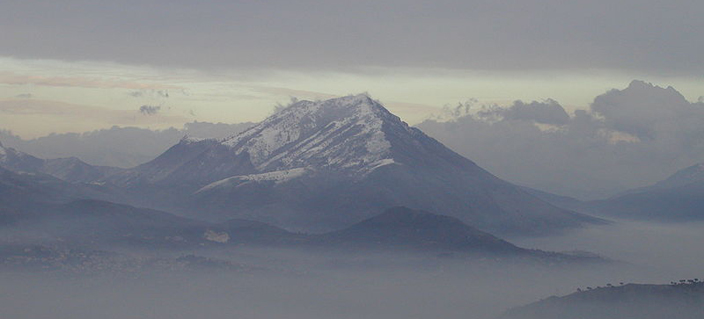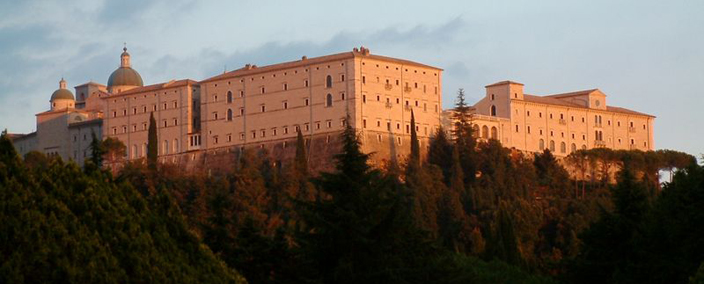The History of the Benedictine Order
St Benedict’s Early Life
The Benedictine Order is named after its founder, St Benedict, who was born in Nursia, near Spoleto, in Italy, around 480 AD. While in his late teens he was sent to study in Rome, but dissatisfied by the life he found there, he decided to turn away from a worldly existence to seek and serve God. He found solitude 40 miles from Rome, in a wild gorge in Subiaco, where, living in a cave, he devoted himself to prayer.
The Spirit of Community
Like-minded individuals sought Benedict out, and he taught them to worship God as a community, rather than in solitude. This sense of community was to become one of the essential principles of the Benedictine Order.

Monte Cassino, where St Benedict wrote his "Rule for Monks".
The Founding of Monte Cassino
The community of monks at Subiaco found Benedict’s way too rigorous and attempted to poison him. It is said that when St Benedict came to bless the cup of poisoned wine that his community had given him, it shattered, and his life was spared.
St Benedict left Subiaco to found another monastery at Monte Cassino. It is there that he wrote his Rule for Monks, his only surviving written work. When he died in the 540s, Monte Cassino was a flourishing and important monastic community.
From Monte Cassino to Rome
Monasteries, being wealthy and undefended, had always been easy prey for non-Christian raiders. Around 580, Monte Cassino monastery was sacked by the Lombards, leading to its destruction and the dispersion of the community. Ironically, it was probably this that led to the growth of the Benedictine Order. The community fled to Rome, where the Pope, Gregory the Great, (who was later to write the biography of Saint Benedict and had previously himself been a monk) helped them establish a monastery there.

The Monte Cassino monastery today.

